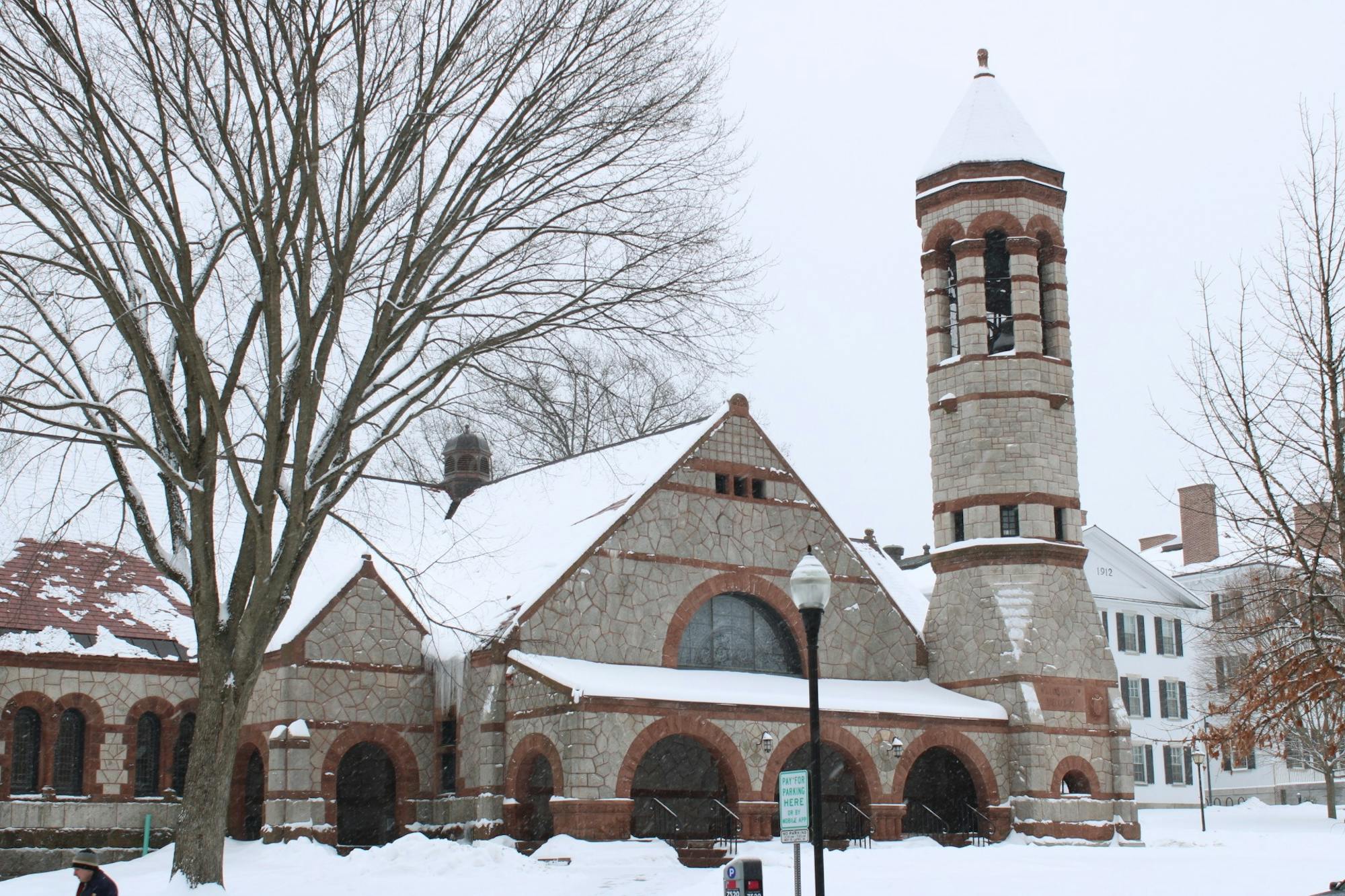As is often true of buildings on campus, there is a lot more to Rollins Chapel than meets the eye. The historic building reopened this winter after several terms of construction, and students are once again welcome to sit in its main nave for a moment of silence, listen to musicians play warm melodies or offer a prayer.
The Chapel’s rededication ceremony on Jan. 26 marked the resumption of the space’s many offerings to students, faculty and staff. Today, Rollins functions as an interfaith space for Christian, Hindu and Jewish services, as well as for performances and talks from other groups on campus.
Under the expansive nave, there is a labyrinth modeled after the thousand-year-old maze in Chartres Cathedral, France. Journey to the labyrinth’s center to let go of the clutter in your mind, receive the wisdom of your inner self upon reaching the middle and bring back a renewed sense of gratitude on the way back.
Rollins Chapel has something to offer for anyone, especially those needing a moment of clarity and rest — which, during week nine, may be most students. You can find most of the building’s other interesting facts on the Rollins Chapel website, but what you might find on an impromptu visit to the chapel is likely even cooler. You may encounter the melodies of the Dartmouth Symphony Orchestra, the wise musings of an organ builder and even some particularly musical wild animals.
Music is what first brought me to Rollins Chapel, and many students find their way through the almost always open doors to attend musical performances held there. As it turns out, these performances occasionally welcome some unexpected guests.
When teaching assistant Winfried Stangl and his German class walked into Rollins Chapel for a rendition of classical Austrian piano music, they certainly did not expect a family of bats to do “laps around the room and right above the head of the piano player,” Winfried recalled.
Apparently, the relaxing ambiance of the Chapel attracts many visitors, some of whom add in a chorus of their own.
“In between the clean and beautiful notes, we heard sssppppsssspppp,” Stangl said, imitating the rhythmic hissing of the bat ensemble.
Winfried added that it was “poetic” that an animal that uses sound to orient itself would reside in a space celebrating vibrant music.
“What a cultured bat that is,” Stangl remembered thinking, as he and the German students swung their heads back and forth, tracking the bats across the nave.
You just never know what graceful sounds may meet your ear — or what creatures you might encounter — when visiting the newly reopened Rollins Chapel.
Organ repairman Bill Czelusniak has made quarterly trips to Rollins Chapel and its grand organ since 1985, and he said he has developed a love for the Chapel and its musical centerpiece along the way. The current organ — which is the Chapel’s third iteration — was built in 1963 by the Austin Organ Company in Hartford, Connecticut and dedicated to Basil F. Austin ’31. So, Czelusniak has been working on the organ in Rollins Chapel for the majority of its existence.
The recent renovation, he said, was “particularly wonderful” because the changes to the ventilation system in response to COVID-19 restrictions resulted in a more stable temperature for the organ’s pipes.
And that is a lot of pipes — “in excess of 4,000,” according to Czelusniak, who expressed an air of confidence in the longevity of his handiwork on the complex instrument.
Rollins Chapel’s organ is the largest pipe organ in the state of New Hampshire, Czelusniak added. After some brief mental fact checking, Czelusniak said that a church in Dover — a town about two hours and 15 minutes east of Hanover — attempted to refute the title of largest pipe organ in the state. However, the church’s system is not completely acoustic and relies on electronic intertwinings to blend the pipes.
“Us old die-hards do not abide,” Czelusniak assured me, concerning his denial of Dover’s claim to the title. According to Czelusniak, Rollins’s prominent, fully acoustic organ is in “the perfect location” for the space.
“When you hear it all together,” Czelusniak began, before moving me from the organ bench to the center of the nave, “it’s a grand sound.”
He asked his coworker, organist Gary Smith, to play me a few chords. As Smith played, the sound swirled around us. Czelusniak’s clear appreciation for the grand instrument and the building around it added to the warmth I felt permeating the sacred space of Rollins Chapel.
During my first visit to the Chapel, and my first time unexpectedly bumping into Czelusniak, we sat on the organ bench and talked about organs, chapels and our lives for longer than my impending English paper would have bargained for. Nevertheless, I walked out of the conversation and the Chapel with humility and appreciation for this building and the organ repairman who never fails to bring it a joyous sound.




